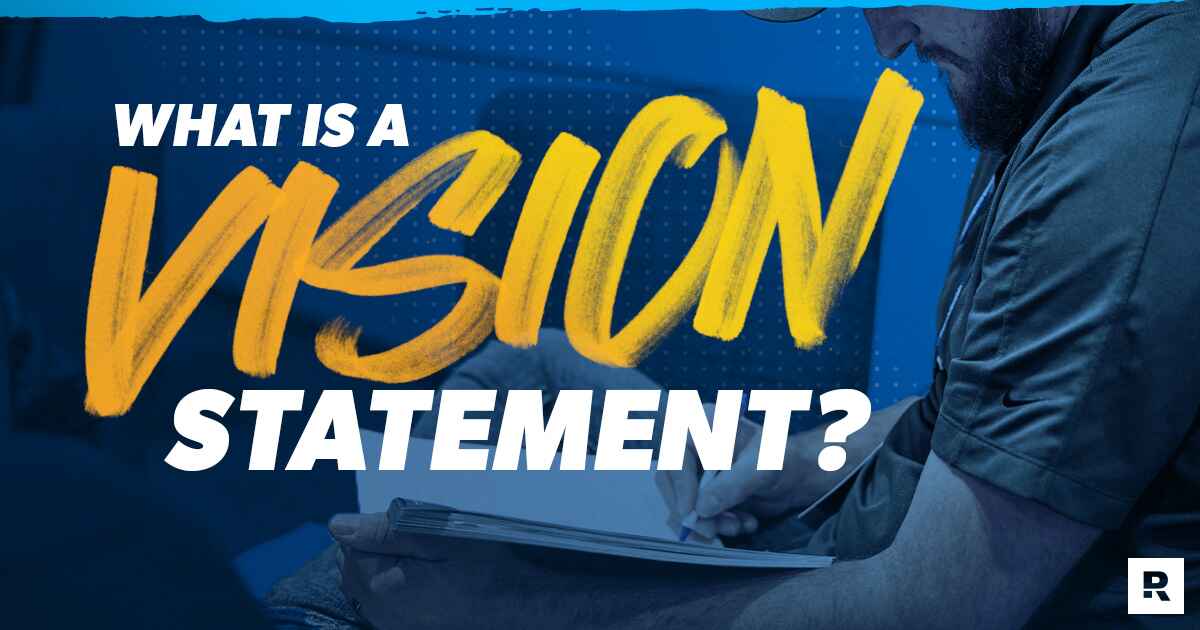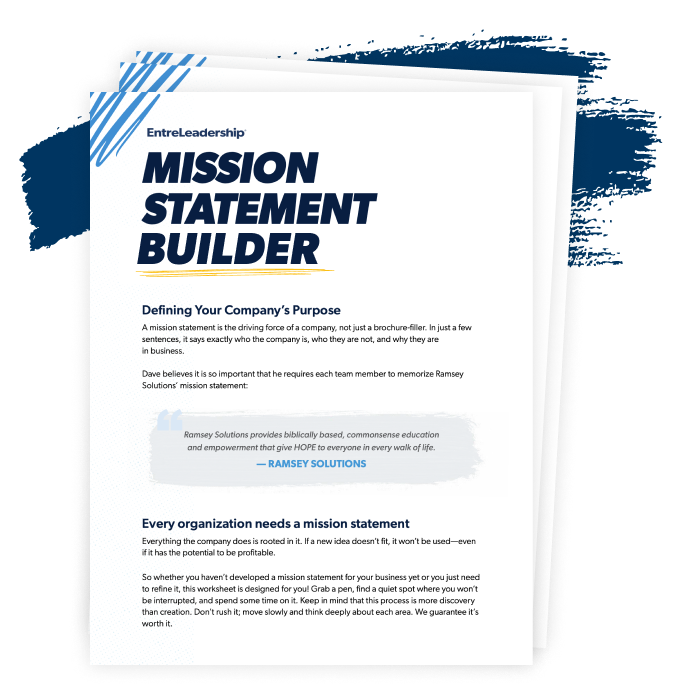What Is a Vision Statement and How Do I Write One?
7 Min Read | Nov 20, 2024

Key Takeaways
- A vision statement is your mission lived out to the nth degree.
- It empowers you with focus, energy and boundaries.
- Don’t create a vision statement that’s so general it fits almost any organization.
- Make sure your vision statement gives language to what you personally believe and is relevant to your market.
Have you ever heard the story of the blind men and the elephant? It’s an important reminder of why your team needs unified vision and a clear vision statement. One version of the story goes like this:
A group of blind men encountered an elephant for the first time. One touched the elephant’s side and said, “An elephant is like a wall.” Another touched a tusk and argued, “No, it’s more like a spear!” Still another grabbed its tail and reasoned, “You’re both mistaken. An elephant is like a rope.” Convinced of their limited views, they wasted time arguing instead of harnessing the elephant’s full potential . . . all because none of them understood it.
The moral of the story: Without clear vision, we risk conflict and confusion with others—and we miss the power and potential within our reach.
How Does Vision Relate to You?
Many business leaders are visionaries. They see a world of possibility others don’t. It’s their superpower. If you have that gift, great! But until you help your team understand and get excited about where you’re going, they can’t help you get there. Once you cast a clear vision, your team can move toward it in a unified direction.
It’s up to you to guide your team with a clear, hope-filled picture of the future your business is headed toward—aka a vision statement. We’ll talk later about how to write yours, but first, let’s get clear on what a vision statement is and how it helps you rally your team toward your desired future.
What Is a Vision Statement?
A vision statement is your mission lived out to the nth degree. In other words, it’s a declaration of what the world would look like if your organization was 100% successful in fulfilling its purpose. For example, the vision statement of Ramsey Solutions is: We see a world in which so many lives are radically transformed, the toxic culture is disrupted! That statement gives Ramsey team members a clear picture of the long-term future they’re working toward—a future better than the present.
A clear, inspiring vision statement is important for both global brands and mom-and-pop shops because it answers the questions “Where is my company going?” and “What will it look like when I live out my mission?”
Related article: Vision Casting: 7 Reasons Why It Matters
What’s the Difference Between Vision and Mission?
Your company’s vision and mission are more than fancy corporate phrases to post on your website and forget about. They serve as guiding stars for where you want your business to go and what opportunities you and your team should focus on (and say no to). They’re also bold reminders of what sets your company apart and why your team members’ work matters.
That’s important stuff! But it’s still easy to get confused about the difference between mission and vision. So let’s clear away the fog.
A mission statement for your organization answers the questions “Who are we?” and “Why do we exist?” It should excite you and your team and distinguish you from other companies. For example, Ramsey Solutions’ mission statement is: Ramsey Solutions provides biblically based, commonsense education and empowerment that give HOPE to everyone in every walk of life.
Related article: How to Write a Company Mission Statement
A vision statement describes what the future will look like when your mission is lived out. It paints a picture of where your business is headed and what its potential impact is in the world. Your vision should inspire you and others to think bigger and broader than ever before. Vision isn’t something you manufacture—it comes from inside of you.
Get the Free Mission Statement Mapper
Working on creating your mission, vision, and values for your business? Start by downloading the easy-to-follow EntreLeadership Mission Statement Mapper! It will help you write a mission statement that gets you and your team fired up and on the same page.
Why Is a Vision Statement Important for My Business?
When your vision statement is clear and compelling and your team members understand how their work helps fulfill it, they’re ready to work with passion and excellence. You can even measure the power of a strong vision: On average, just a 10% improvement in team member connection with their company’s purpose reduces turnover by more than 8% and increases profit by 4.4%.1
Your vision statement also empowers your organization with:
- Focus: What you focus on is what moves forward. A vision statement clearly defines what winning looks like for your business and helps you move toward it with the eye of the tiger.
- Energy: A vision statement reminds you and your team of your impact on your community and the world. It’s the spark that keeps you going on the hard days.
- Boundaries: A vision statement keeps you from wasting time, energy and money on things that don’t move your business in the right direction.
But without vision, your organization will wander aimlessly. Proverbs 29:18 goes as far as to say, “Where there is no vision, the people perish." No, your team won’t literally perish. But lack of vision can destroy morale, motivation and productivity. Team members feel like cogs in a wheel, turnover skyrockets, sales take a dive, you struggle to make payroll, and eventually your business tanks.
What’s the simple lesson? Lead with vision.
Related article: What Is Leadership?
How to Write a Vision Statement
If you didn’t have a vision to capture in a vision statement before, you do now, right? Awesome! But before we get to how to write yours, let’s look at some things you don’t want to do.
- Don’t create a vision statement that’s so general it fits almost any organization.
- Don’t make your vision statement so wildly unrealistic that no one takes it seriously.
- Don’t include numbers and metrics in your vision statement. Leave the metrics to strategic planning and goal setting.
What you do want to do is write a vision statement that:
- Gives you language for what you personally believe
- Is relevant to your market
- Rallies your team around a common purpose
- Serves as an out-of-bounds marker (so your team can line up their work with your company mission)
- Guides your team members on opportunities to say yes (and no) to
- Presents an inspiring and ambitious challenge
- Encourages your team members to be emotionally invested in your organization
- Paints a clear picture that’s easy to visualize
With all that in mind, here are the steps to create your vision statement:
Step 1: Start by reflecting on the past. What did you love to do when you were a kid? What did you dream of becoming?
Step 2: Dig deeper by thinking about why you are in this business. What makes you angry enough to drive for change (in your neighborhood, your industry or the world)?
Step 3: Craft your vision. Try writing a vision statement for your company. How would the world be different if you accomplished that vision to the highest level?
Pro tip: Get away from the office and involve your leaders as you write and reflect. Talk about your vision together, argue it out, and make it something that inspires and motivates everyone to work hard over the long haul.
Step 4: Share your vision with your team members until they can say it in their sleep. That way, as your organization grows and changes, your team members still reflect your vision.
Related article: How to Communicate Effectively
Remember, writing a vision statement takes time. You probably won’t nail yours down in just one session. Keep refining it until your statement communicates the future impact you see for your business.
Examples of Great Vision Statements
Need a little inspiration before you start your draft? Take some notes from these brands with solid vision statements:
LinkedIn: Create economic opportunity for every member of the global workforce.2
4KIDS: A home for every child.3
IKEA: To create a better everyday life for the many people.4
YouVersion: Connecting everyone, everywhere, to God's Word every day.5
The Coca-Cola Company: To craft the brands and choice of drinks that people love, to refresh them in body and spirit.6
Hatch Creatives: To provide space for community over competition for all women.7
What’s Next: Clarify Your Mission, Run With Vision
As Ramsey Solutions CEO Dave Ramsey says, “Winning is an intentional act”—one that includes getting clear on your business’s purpose and potential impact. Here’s how:
1. Clarify your business mission statement.
2. Write your company vision statement.
3. Start communicating consistently and clearly with your team.

